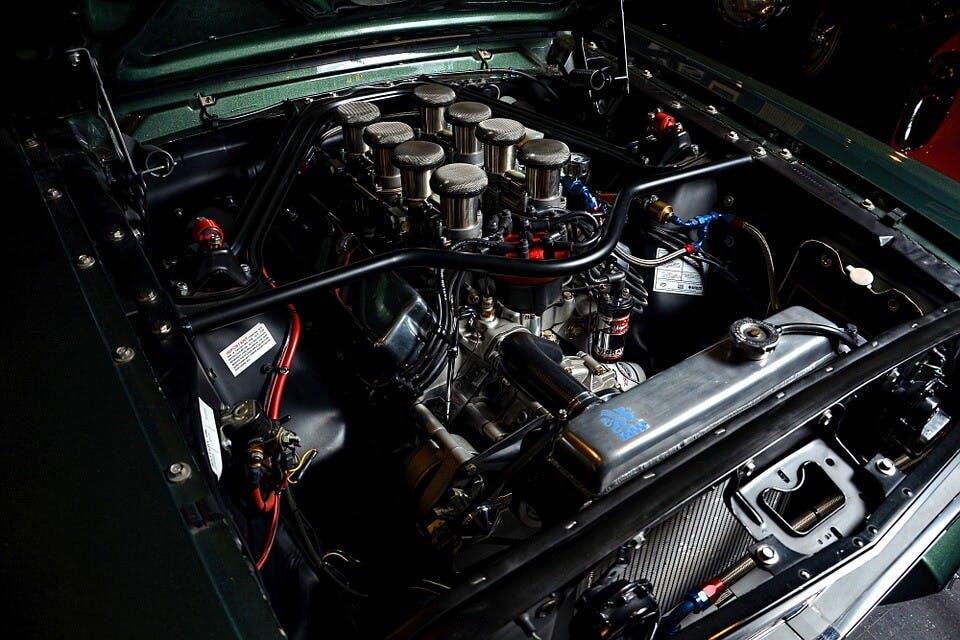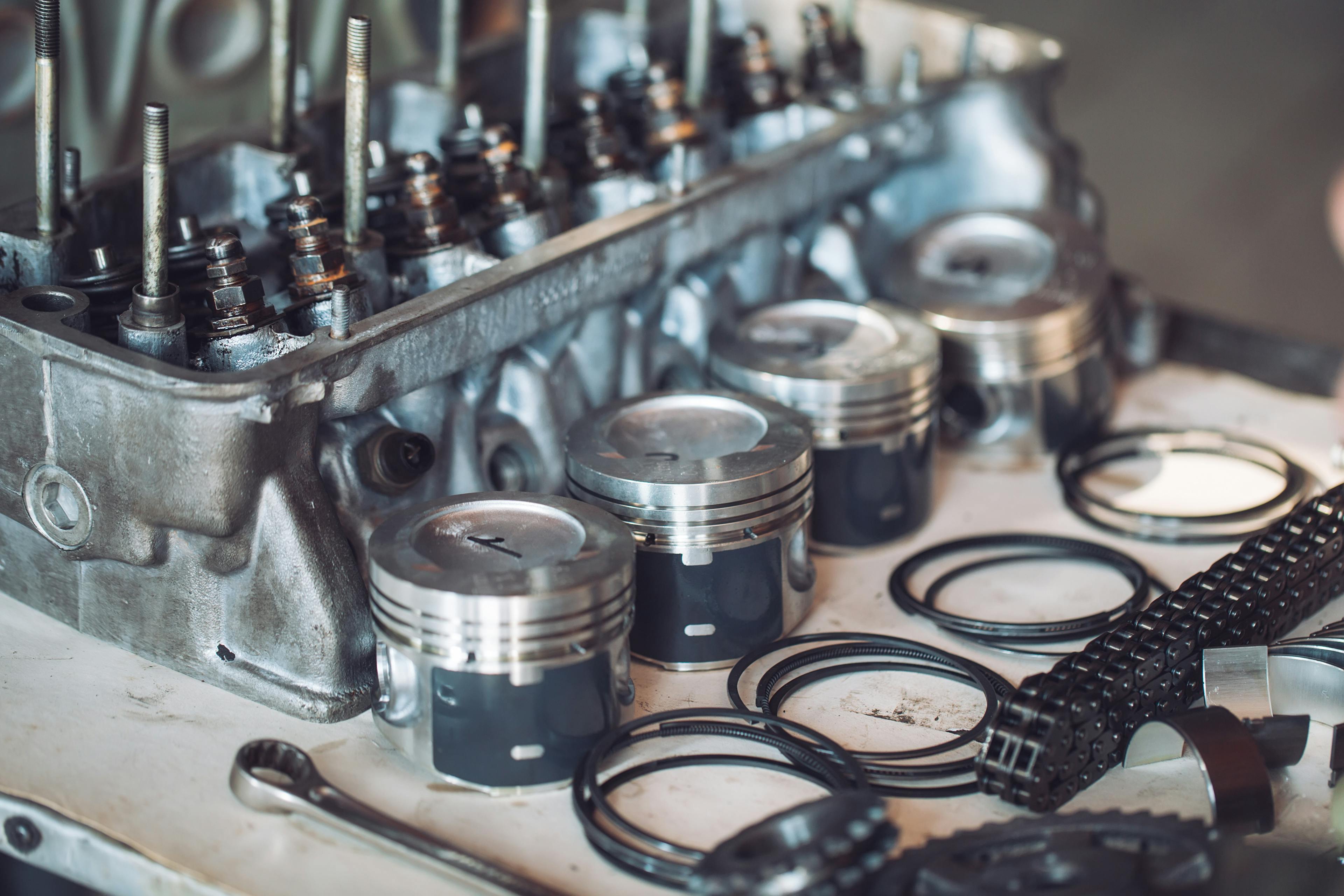Internal combustion engine: How does it work?

An internal combustion engine is a heat engine that generates thermal energy by burning fuel. It subsequently converts this energy into mechanical work or a reaction effect.
The term internal combustion engine is usually understood as a piston internal combustion engine, but this is incorrect, as an internal combustion engine does not always have to be only a piston internal combustion engine.
Inhoudsopgave
This article will shed light on the internal combustion engine in a broader sense, looking at its advantages, disadvantages, classification, and function.
How does an internal combustion engine work?
An internal combustion engine burns fuel, which converts into heat thanks to a chemical reaction. This heat, in turn, heats the working gas, which increases its pressure or volume, allowing the engine to perform mechanical work or reaction action.

Engine Pistons: How do they work?
The mechanical work of the engine is performed by applying pressure to the moving part of the engine (for example, the pistons). However, with a rocket or jet engine, the mechanical work of the machine is not used for movement. Instead, the reactive effect of the substance coming out of the engine is used, which ensures its movement in the opposite direction.
An internal combustion engine can operate as follows:
- With fuels that are solid, liquid, or gaseous
- The environment in which it works is often atmospheric oxygen or a substance releasing oxygen during combustion.
- Combustion can take place inside (internal combustion) or outside the engine (external combustion)
- The moving part of the engine, which is pressed by the working gas, can move in different directions.
- The working gas can be separate, but it can also contain exhaust gases
- The working gas is continuously exchanged, but it can also be permanently enclosed in the engine
Since there are several types of internal combustion engines in different designs that work according to different criteria, it is necessary to divide them into several independent points.
However, this division is only brief, because each type of combustion engine is divided into further subgroups.
Division of combustion engines
According to the place where the combustion takes place:
- Engines with internal combustion (for example, spark, diesel, Wankel engine, and combustion turbine)
- Engines with external combustion, in which, however, it is necessary to distinguish whether the energy enters the working space through the supply of working gases (for example, a gas turbine ) or by heat transfer through a heater of the working substance (for example Stirling engine)
According to the work cycle:
- Engines with a continuous cycle (for example, a combustion turbine)
- Engines with an interrupted cycle (two-stroke and four-stroke engines)
According to the working principle:
- Reciprocating internal combustion engines, more specifically reciprocating piston engines (most reciprocating internal combustion engines) and reciprocating piston engines (Wankel engine)
- Blade engines (turbines)
- Reactive engines (rocket engines, or also jet engines)
According to the method of triggering combustion:
- Spark-ignition engines - a spark from a spark plug triggers combustion
- Combustion-ignition engines - combustion is triggered by high temperature and compression of the working mixture
- Hot-bulb engines - an external heat source can heat it
- Engines with combined ignition
Another division of internal combustion engines
According to the type of fuel burned:
- Gas (burning gaseous fuels, for example, CNG and therefore natural gas) - liquid (burning petrol, diesel, or other substances)
- Solid (pulverized coal)
- Multi-fuel (can switch to burning several types of fuel)
- Dual-fuel (they burn various kinds of fuel at the same time)
The most commonly used fuel for an internal combustion engine is:
- Gasoline
- Diesel
- Compressed natural gas (CNG)
- Liquefied petroleum gas (LPG)
- ALcohols (methanol, ethanol)
- Liquid hydrogen
- Kerosene
- and others...
In addition to fuel, air is an essential component of the mixture for most internal combustion engines, as it contains oxygen necessary for combustion.
According to the place of preparation of the mixture:
- The creation of the mixture takes place outside the working space (carburetor, SPI, MPI)
- The creation of the mixture takes place in the working space (direct fuel injection, for example, Common-rail)
According to the method of preparation of the mixture:
- Engines with carburetor mixture preparation
- Engines with fuel injection
According to the method of air transport:
- Naturally aspirated engines - intake provides a vacuum caused by the movement of the piston in the cylinder
- Supercharged engines - the cylinder is filled under greater pressure than the surrounding atmosphere
Each type of internal combustion engine has its advantages and disadvantages. Let's take a look at them.
Advantages of internal combustion engines
- Reciprocating combustion engines achieve high energy conversion efficiency (quick start-up)
- They can be designed to burn various fuels, but also in various sizes and for different purposes
Disadvantages of internal combustion engines
- Unfavorable impact on the environment and the health of people and other organisms
- They require a foreign source of energy for their start - except for rocket engines
- Reciprocating combustion engines have disadvantageous performance characteristics
- Limited lifespan